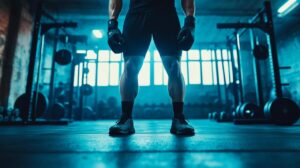Finding the right handwear for your training sessions can make a genuine difference to both your comfort and your results. Whether you are just starting out or pushing towards new personal bests, understanding the options available and how they align with your specific needs is essential. From protecting your skin to enhancing your grip, the right choice supports your ambitions in the gym and helps you train consistently without unnecessary discomfort.
Understanding Different Types of Weightlifting Mitts and Their Practical Benefits
When you step into the gym, you will notice a variety of handwear designs, each tailored to different training demands. Some lifters prefer full coverage, while others opt for designs that leave the fingers exposed. The choice between these styles is not merely aesthetic; it directly affects how you interact with the bar, dumbbells, and other equipment. Full-finger gloves provide comprehensive protection across the entire hand, shielding your skin from friction and offering a barrier against the cold metal of weights. This design is particularly useful for those who train in environments where hygiene is a concern or for individuals who experience discomfort from prolonged contact with equipment. On the other hand, fingerless gloves, which expose the tips of your fingers, allow for greater tactile feedback and improved ventilation. This design is favoured by those who value direct contact with the bar and need to adjust their grip quickly during complex movements. The best weightlifting glove option for you will depend on your training style, the exercises you perform most frequently, and your personal comfort preferences. If you engage in a mix of heavy compound lifts and dynamic movements, fingerless designs might offer the flexibility you need. Conversely, if you prioritise all-round protection and support, full-finger gloves could be the better fit.
Full-finger gloves versus half-finger designs: which suits your training style
The debate between full-finger and half-finger gloves is ongoing among fitness enthusiasts, and both designs have their loyal advocates. Full-finger gloves wrap around every digit, offering complete coverage that guards against blisters and calluses across the entire hand. This design is ideal for those who perform a wide range of exercises, from bench presses to pull-ups, and want consistent protection throughout their session. The additional coverage can also provide a psychological boost, giving you the confidence to grip the bar firmly without worrying about skin damage. However, some lifters find that full-finger gloves can feel restrictive, particularly when performing movements that require quick adjustments or fine motor control. Half-finger gloves, by contrast, leave the tips of your fingers free, which enhances sensitivity and allows you to feel the texture of the bar or handle more directly. This can be especially beneficial during exercises like deadlifts or rows, where precise grip adjustment is crucial. The exposed fingertips also improve ventilation, helping to keep your hands cooler and reducing the buildup of sweat. Many CrossFit athletes and functional fitness enthusiasts favour this design because it strikes a balance between protection and dexterity. Ultimately, your choice should reflect the demands of your workout routine and your tolerance for direct contact with equipment.
Material Considerations: Leather, Neoprene, and Synthetic Options for Durability
The material from which your gloves are made plays a significant role in their performance and longevity. Leather gloves are renowned for their durability and classic feel. They mould to the shape of your hand over time, providing a bespoke fit that becomes more comfortable with regular use. Leather is robust and can withstand the rigours of heavy lifting, often lasting over two years with proper care. However, leather gloves require special attention; they need to be cleaned carefully and allowed to dry naturally to prevent stiffening or cracking. For those willing to invest in maintenance, leather offers a premium experience and excellent grip. Neoprene gloves provide a different set of advantages. This synthetic rubber material is flexible, water-resistant, and offers good padding, making it a popular choice for those who sweat heavily during workouts. Neoprene is also easier to clean than leather and dries quickly, which helps to maintain hygiene. Synthetic fabrics, such as polyester blends, are another common option. These materials are lightweight, breathable, and typically more affordable than leather. Synthetic gloves are easy to wash and can be dried rapidly, which is convenient for those who train frequently. While they may not last as long as leather, with synthetic gloves typically lasting about six months to a year with regular use, they offer excellent value for beginners or those on a budget. Gel padding is often incorporated into synthetic designs to spread pressure evenly and absorb impact, enhancing comfort during heavy lifts. Foam padding is a cheaper alternative but tends to compress and lose its effectiveness more quickly. Choosing the right material means balancing durability, comfort, and ease of maintenance with your training frequency and budget.
Selecting Weightlifting Gloves to Maximise Grip Strength and Protect Your Hands

Grip strength is fundamental to almost every lifting exercise, from deadlifts to bench presses. Without a secure hold, your ability to lift heavy weights safely and effectively is compromised. Weightlifting gloves are designed to enhance your grip by providing a textured surface that increases friction between your hand and the bar. Many gloves feature silicone or rubberised patterns on the palm, which prevent slippage even when your hands are damp with perspiration. This added security allows you to focus on your form and the movement itself, rather than worrying about the bar slipping from your grasp. In addition to grip enhancement, gloves with wrist straps offer extra support for heavy lifting. These straps wrap around the wrist and secure with a hook-and-loop fastener, stabilising the joint and reducing the risk of hyperextension during overhead presses or snatches. This feature is particularly valuable for those who have a history of wrist discomfort or who are progressing to heavier loads. The combination of improved grip and wrist support can lead to more confident lifting and better overall performance, enabling you to push your limits while maintaining safety.
Enhancing your lifting performance through proper glove fit and padding
The fit of your gloves is just as important as the material or design. Gloves that are too tight can restrict blood flow and cause discomfort, while those that are too loose can bunch up, creating friction points that lead to blisters. To find the right fit, measure the circumference of your hand around the knuckles, excluding the thumb, and compare this measurement to the sizing chart provided by the manufacturer. Most gloves are available in small, medium, large, and extra-large sizes, with some brands offering additional half sizes for a more precise fit. When you try on a pair, ensure that the gloves feel snug but not constricting, and that there is no excess material at the fingertips. The padding within the gloves also plays a crucial role in performance. Gel padding is highly effective at distributing pressure across the palm, which reduces the stress on any single point and prevents the formation of painful calluses. This type of padding is particularly beneficial during exercises that involve prolonged gripping, such as bent-over rows or lat pulldowns. Foam padding, while less expensive, provides adequate cushioning for lighter workouts and is often sufficient for beginners. Breathable materials, such as mesh panels, help to wick away moisture and keep your hands cool, which is essential for maintaining grip and comfort throughout your session. Regular cleaning and drying of your gloves will also help to prevent skin problems and extend their lifespan, ensuring that they continue to support your training goals over the long term.
Preventing calluses and blisters: how quality mitts support long-term training goals
One of the primary reasons lifters choose to wear gloves is to protect their hands from the inevitable wear and tear of regular training. Calluses and blisters are common among those who lift weights frequently, and while some view them as badges of honour, they can become painful and may interfere with your ability to train consistently. Quality gloves act as a barrier between your skin and the bar, absorbing much of the friction that would otherwise cause damage. This protection allows you to maintain a consistent training schedule without the need for recovery periods due to hand injuries. Over time, this consistency translates into better progress and improved performance. Additionally, gloves contribute to hygiene by reducing direct contact with equipment that is shared by many users. This can be particularly important in busy gyms where the risk of transferring bacteria or fungi is higher. By keeping your hands protected, you also avoid the discomfort of tearing calluses, which can be both painful and slow to heal. For those who are serious about their training, investing in a good pair of gloves is a practical step towards ensuring that nothing disrupts your routine. Whether you opt for premium leather gloves that offer durability and a custom fit or choose more affordable synthetic options that are easy to clean and dry quickly, the key is to select a pair that meets your specific needs and supports your long-term fitness ambitions.







